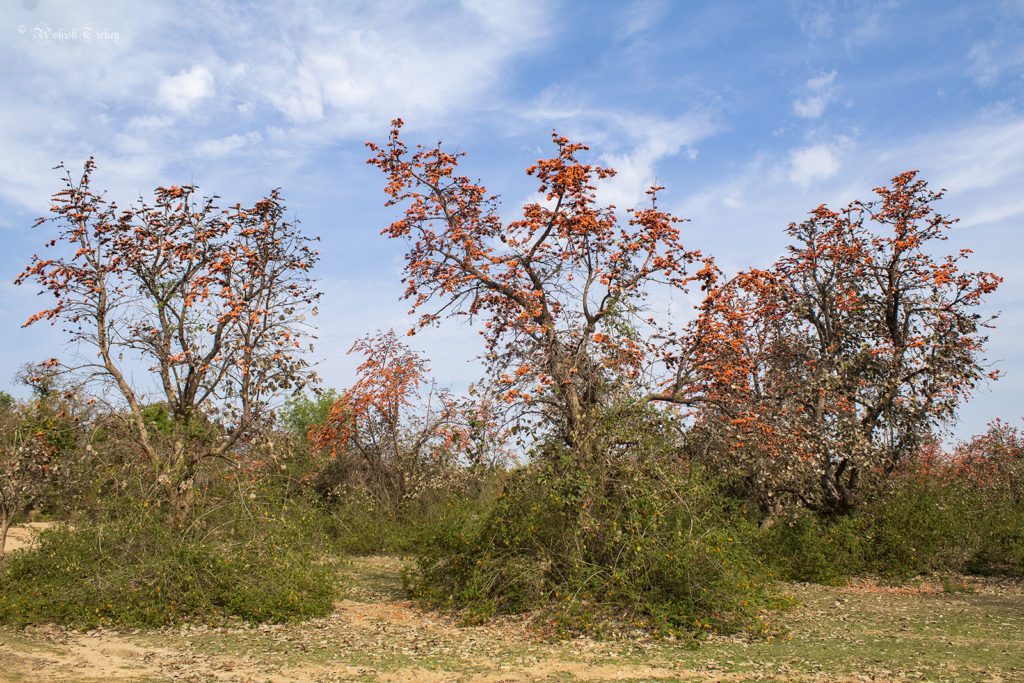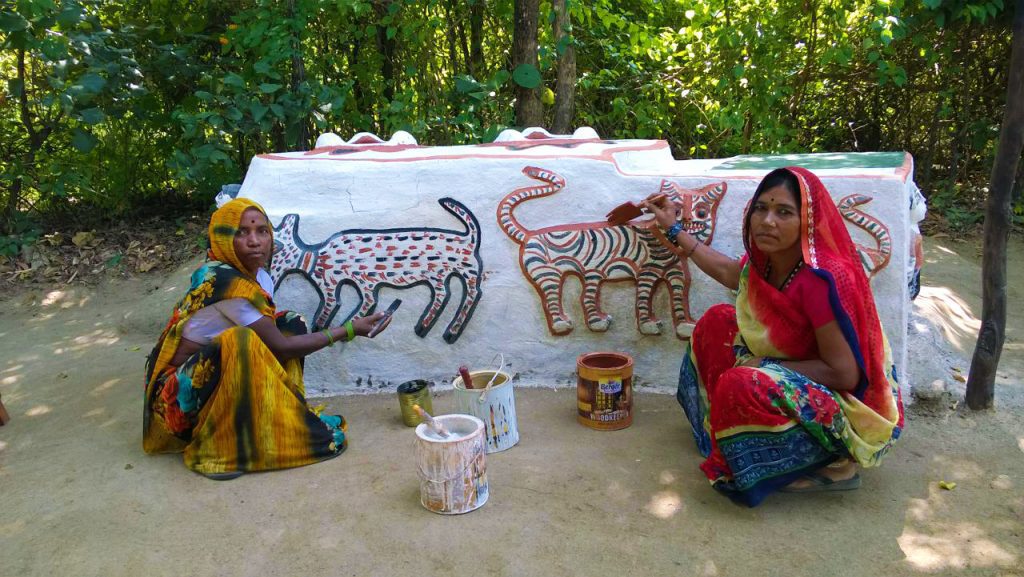Palash or Flame of the Forest is best known for its beautiful, radiant flowers that blossom just upon the arrival of Spring, in the month of March and April. Currently, the forests of Central India are ablaze with a riot of colours that the Palash has rendered it with. These flaming beauties are imparting the forests and each one of us the much-needed hope we need in the difficult times of a global pandemic, this year.

Its bright orange flame-like flowers emerge once the tree starts shedding its leaves. The whole tree then glimmers with a fiery blast of colour, giving it the name ‘Flame of the Forest’.
In many states of India like West Bengal, Telangana and Andhra Pradesh, the radiant flowers are used in marriages and also served as an offering to Lord Shiva. People also use them in religious ceremonies at home and for havan and poojas.

Palash, Chula, or Tesu as we locally call it in Madhya Pradesh, is a small medium-sized slow-growing, deciduous tree species, native to India. Its dark greyish bark, asymmetrical trunk, and irregularly spread branches give it a very distinctive appearance. It has pinnate leaves that are broad and round in shape. Some tribal communities also make leaf plates and bowls out of it, for household usage.

The Many Properties of Flame of the Forest:
- Palash as a tree is of immense medicinal value and its bark is used to treat cuts and wounds.
- Its gum, Bengal Kino is used for the treatment of diarrhoea and dysentery.
- Its flowers are rich in sulphur and used for the treatment of skin-related diseases.
- These flowers when sun-dried are used to make a natural dye for the festival of colors – Holi.
- Its seeds have anthelminthic properties and when mixed with lemon juice provides relief from eczema and ringworm.
- It is also used to treat skin ulcers, piles and eye disorders like cataracts.
Contributed by: Ashish Tirkey
Edited by: Natasha Sinha



